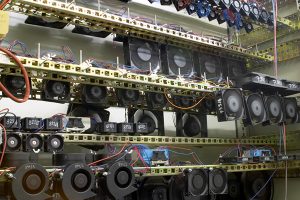A recent trade show brought together businesses from various industries, fostering an environment of innovation and collaboration. Entrepreneurs, investors, and professionals gathered under one roof to showcase groundbreaking ideas and explore new opportunities. With a mix of established companies and emerging startups, the event became a hub of creativity, where industry leaders exchanged insights and discovered fresh approaches to growth and success. The diverse range of exhibits and presentations highlighted the latest advancements in technology, marketing strategies, and business solutions, setting the stage for future progress. One of the key takeaways from the event was the emphasis on networking and partnerships. Attendees had the chance to connect with like-minded professionals, creating a platform for potential collaborations. Many businesses leveraged the opportunity to form strategic alliances, gaining access to resources and expertise that could propel their operations forward.
The trade show booth rental cost served as a bridge between different sectors, encouraging cross-industry cooperation and opening doors to innovative solutions that might not have been possible in isolation. Innovation took center stage as companies demonstrated cutting-edge products and services designed to meet the evolving needs of consumers. From artificial intelligence and automation to sustainable practices and digital transformation, the showcased developments reflected the rapidly changing landscape of global commerce. Entrepreneurs presented revolutionary ideas that promised to enhance efficiency, reduce costs, and improve customer experiences. The exchange of knowledge between industry veterans and newcomers contributed to a shared vision of progress, inspiring attendees to embrace change and adapt to new trends. Workshops and panel discussions played a crucial role in educating participants about industry best practices and future challenges. Experts from different fields shared their perspectives on market trends, technological advancements, and consumer behavior, providing valuable insights to attendees.
These interactive sessions encouraged dialogue, allowing businesses to gain a deeper understanding of industry shifts and emerging opportunities. The exchange of ideas helped professionals refine their strategies, equipping them with the knowledge needed to stay ahead in a competitive market. The Aplus trade show also highlighted the importance of adaptability and resilience in an ever-changing business environment. Companies that embraced innovation and remained open to new possibilities demonstrated their ability to thrive despite challenges. Entrepreneurs learned that staying ahead requires not only creativity but also a willingness to evolve and respond to market demands. The event underscored the significance of continuous learning and development, motivating businesses to invest in research, training, and new technologies to maintain their competitive edge. Beyond business growth, the event also emphasized corporate responsibility and ethical business practices.


